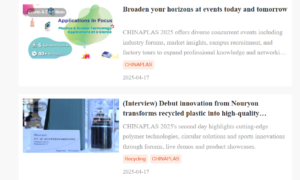Are you tired of attending dull and monotonous conferences and exhibitions? Well, brace yourself for a revolution in the event industry! Augmented reality is here to transform your virtual experiences into something truly extraordinary. In this blog post, we will explore how virtual tours and events are taking center stage, bringing conferences and exhibitions to life like never before. Get ready to dive into a world where imagination meets innovation, as we delve deep into the realm of augmented reality.
Introduction to Virtual Tours and Events
When it comes to events and conferences, being physically present is incomparable. However, Augmented Reality (AR) has opened up possibilities for event planners to bring their events to life virtually.
Virtual tours and events have become increasingly popular in achieving this. Through virtual tours, attendees can get a close look at the venue without actually being there. This is especially beneficial for conferences and exhibitions held in different parts of the world.
With AR, event planners can also create virtual exhibits for attendees to explore from the comfort of their homes. These virtual exhibits can range from 3D models of conference centers to interactive maps of exhibition floors.
Whether you want to add excitement to your next event or give attendees a way to experience it from anywhere, virtual tours and events are a great option.
Benefits of Using Augmented Reality in Conferences and Exhibitions
Augmented reality offers several benefits in conferences and exhibitions, making the experience more engaging and immersive for attendees. Here are a few ways AR can be utilized:
Interactive experiences: AR enables interactive experiences, such as virtual tours or interactive games and quizzes for attendees to enjoy.
Enhanced presentations: AR can enhance presentations by incorporating AR content in slideshows or providing live product demonstrations, making them more engaging and informative.
Marketing materials: AR can be used to create interactive marketing materials like brochures and posters to promote the conference or exhibition effectively.
Increased engagement: Augmented reality boosts engagement levels by providing immersive and interactive experiences, keeping attendees interested throughout the event.
Best Practices for Setting Up a Virtual Tour or Event
To ensure a successful virtual tour or event, consider these best practices:
Engaging content: Create compelling and suitable content for the virtual format.
Effective marketing: Promote your event to potential attendees through proper marketing strategies.
Smooth registration process: Design a user-friendly registration process for easy event access.
Examples of Successful Utilization of Virtual Tours and Events
Several companies and institutions have successfully utilized virtual tours and events:
The Museum of Modern Art in New York City engages a global audience with their virtual tours and events, achieving new levels of engagement and attendance.
National Geographic Society allows people worldwide to experience their renowned exhibitions through virtual tours and events.
The British Museum in London enables individuals to enjoy exhibitions from home, particularly benefiting those unable to travel due to health reasons or commitments.
The Guggenheim Museum in Bilbao, Spain, reaches a broader audience through virtual tours and events, leveraging cutting-edge technology.
Tips for Maximizing Your Virtual Tour or Event
To make the most out of your virtual tour or event, keep these tips in mind:
Engaging and informative content: Ensure your content is interesting and educational for attendees.
Visual appeal and navigation: Design your tour or event with an appealing visual layout and easy navigation.
Early promotion: Promote your virtual tour or event ahead of time to allow attendees to plan their participation.
Challenges and Limitations of Virtual Tours and Events
Organizing virtual tours and events can be challenging due to certain limitations. Firstly, the technology required for creating and hosting these experiences can be expensive and not accessible to everyone. Secondly, virtual tours and events differ from physical ones, which can affect people’s engagement and immersion levels. Without careful planning and execution, virtual experiences may become dull and uninteresting.
Conclusion
virtual tours and events offer an immersive and interactive way to bring conferences and exhibitions to life. By utilizing augmented reality technology, organizations can create experiences that make attendees feel as if they are physically present, without the need for travel or accommodation bookings. This enables them to reach a larger audience while still providing engaging content and activities for virtual participants. As virtual tours and events gain popularity, we can expect more organizations to utilize this powerful tool for connecting people online.


































